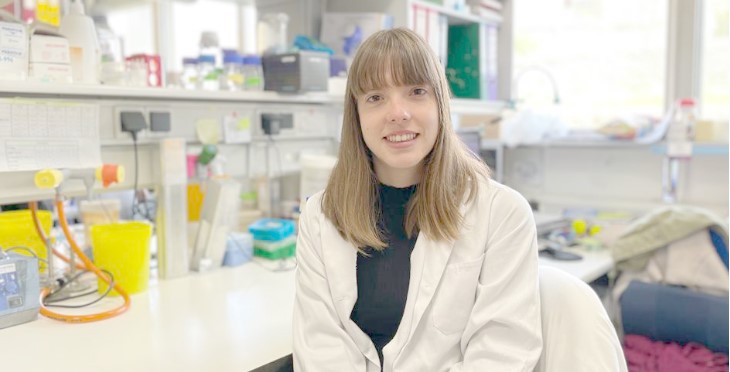Role of C3G in platelet spreading and vesicle trafficking

Cristina Fernández Infante
Centro de Investigación del Cáncer (CIC-IBMCC)
C3G is one of the main activators of Rap1 GTPases, being the Rap1b isoform an essential player in most platelet functions. C3G mediates platelet activation and aggregation, but also platelet-mediated pathological angiogenesis and metastasis. Moreover, C3G has a role in megakaryopoiesis and thrombopoiesis.
We have generated a conditional knockout mouse model for C3G, Rapgef1flox/flox; PF4-Cre+/- (hereinafter C3G-KO), where C3G is specifically deleted in platelets and megakaryocytes. C3G-KO platelets showed a significant bleeding diathesis and an impaired activation and aggregation in response to thrombin, PMA and ADP and CRP, which correlates with lower levels of Rap1-GTP.
Since overexpression of C3G modulates α-granule secretion, we have analysed the role of C3G in platelet spreading and its interaction with different proteins related to the secretory machinery, such as SNARE proteins, SNAP and syntaxins, using transgenic and knockout mouse models of C3G. We found that C3G regulates platelet spreading in a Rap1-independent manner. In addition, we detected not only a positive interaction of C3G with SNARE proteins and its regulators, but also alterations in the speed of the trans-SNARE complex formation in C3G overexpressing platelets. Furthermore, C3G regulates cytoskeleton organization by Rac1-WAVE2-Arp2/3 pathway, modulating lamellipodia formation. Of note, this role is substrate-dependent as differences were only seen when using CRP or fibronectin.
Platelet secretion is also a major mediator in inflammation. Thus, we explored the participation of platelet C3G in the secretion of inflammatory factors. Our results showed that C3G controlled platelet-leukocyte interaction after thrombin stimulation, in particular with neutrophils and lymphocytes.
In conclusion, our results reinforce the notion of a role of C3G in cytoskeleton-mediated processes, such as platelet spreading and secretion, and suggest its possible implication in immune responses.

